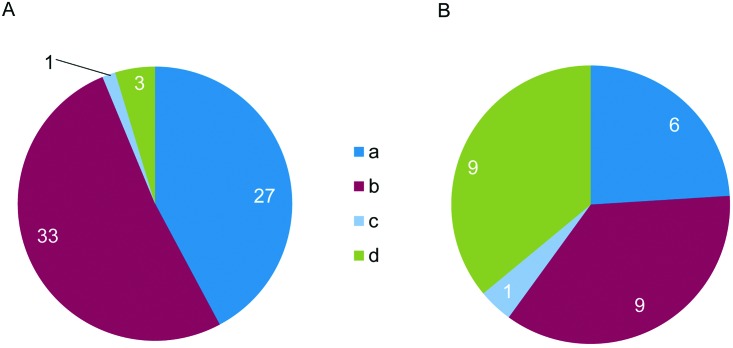Figure 7.
Training methods. Responses to question 18: “What type of training procedures best describe the methods used to prepare your monkeys for restraint procedures? (tick one from a to d) (a) Monkey is trained in a stepwise fashion, and is allowed to progress through the steps at his/her own pace. Positive reinforcement (for example, food treat, verbal praise) is provided for cooperating with each of the steps. No negative reinforcement (for example, use of the squeeze-back mechanism, tugging on the pole to encourage the monkey to move) is used. (b) Monkey is trained in a stepwise fashion, but if not progressing as expected, the use of a squeeze-back mechanism, second pole, or other negative reinforcer is used to speed up the process. Positive reinforcement is provided throughout the process. (c) The use of a squeeze-back mechanism or other similar negative reinforcer is introduced at the beginning of the training phase and is paired with a positive reinforcer. The monkey goes through the training steps at a predetermined pace. (d) Monkey is placed in the chair and rewards are provided once secured. Struggling is observed in the beginning, but over time the monkey appears calm and cooperates with the procedure.” (A) Responses from academic and government sectors (n = 64). (B) Responses from contract research and pharmaceutical sectors (n = 25).

